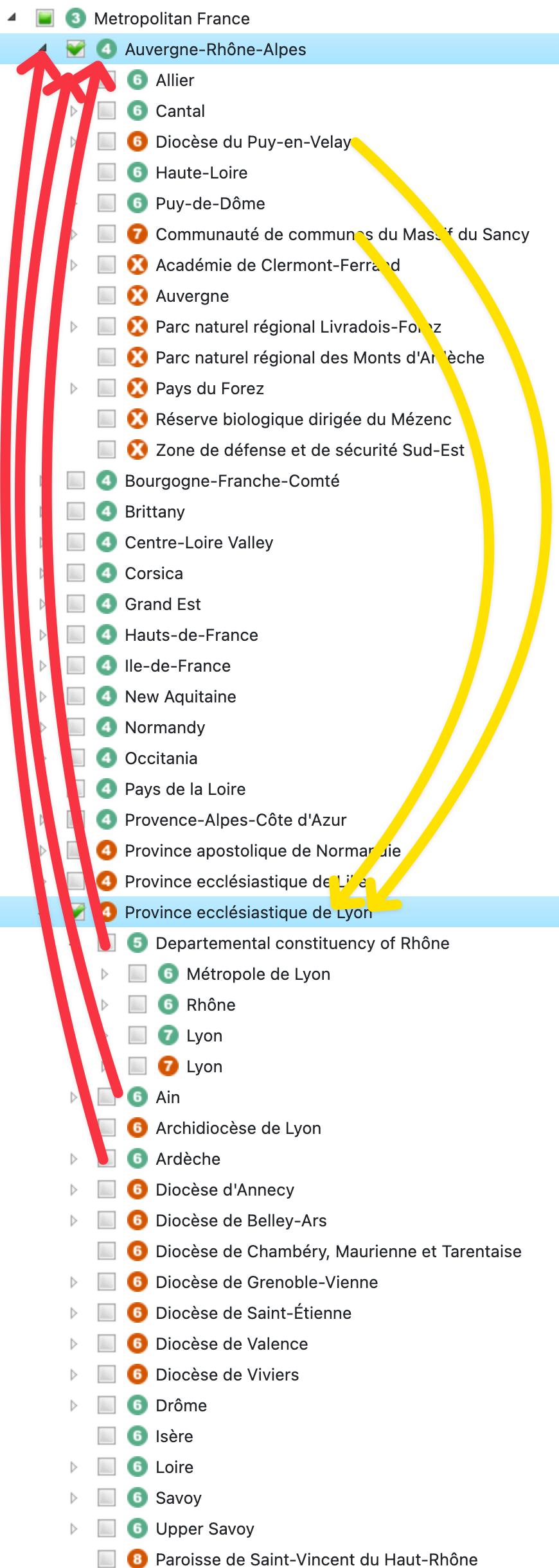Dealing with tree hierarchy of non-administrative boundaries
Besides using the boundaries themselves, I use the data from the tree on the left.
My first comprehensive usage of OSMB was in Q1 2021, when mostly administrative boundaries were part of the dataset.
Now (and since quite a while), there are many others, e.g. region, religious_administration, etc..
While this is mostly nice, I have some issues now, so I'm asking the community how you're dealing with it.
So, there are e.g. "region" boundaries like Klagenfurt-Villach (-2754657), inside Austria/Carintia which I can simply skip and go directly to their children which are again administrative. So far all good.
There are however issues with e.g. some (mostly religious) boundaries which receive children which should be in another administrative boundary:
E.g. Province ecclésiastique de Lyon (-14059783) is in Metropolitain France and almost in Auvergne-Rhone-Alpes (-3792877) but not fully, there's a tiny extension in the center north. I understand why it's thus not inside but parallel, all fine.
However, the administrative boundaries which should (IMHO) end up in Auvergne-Rhone-Alpes (-3792877, administrative) end up in Province ecclésiastique de Lyon (-14059783, religious).
Finally the question itself:
Is there any way (in the UI, from the tree JSON data, ...) without using a complex Poly-in-Poly detection, to move the administrative sub-boundaries into their matching administrative boundary?
Visually speaking: I want children green icons preferably inside green-icon parents, not in red-icon siblings of the parent, see red arrows in the attached screenshot. Similarly (but not relevant for me), the religious Dioceses and Communities could be inside their specific parent (I wanted to show that with the yellow arrows but only later saw, that the yellow arrows are actually wrong because those children are NOT inside the region the arrows point to.




From our perspective we know that this is, or at least can be, an issue. We haven't figured out the perfect solution to this, and honestly haven't spent too much time on it either. Note that the site was created to cover our own needs in another project, and therefore we haven't made it perfect in all other aspects.
The best idea we have this far is to have a checkbox for administrative-only (as the site originally was), or not (as it is now). Implementing this isn't super easy though, we have to make some fundamental changes for it. Though the code of the site isn't enormous, so it's doable.
There is a todo-list for the site and the third item is names Option to remove none administrative. The list is unordered though.
I didn't look into details of your example since I am actually not working right now, though I could keep myself away from answering. Does this sound like a solution that would help you, or should I study your example more careful?